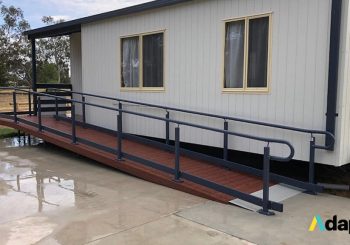When it comes to installing wheelchair ramps on residential or commercial properties, one of the first questions that people tend to ask is if they will need to secure a building permit.
In most cases, building permits aren’t required for minor construction work, such as small tool sheds or a retaining wall that’s less than a metre high. However, when it comes to accessibility or wheelchair ramps, especially those used outdoors, the building permits and requirements can vary depending on where you’re located in Australia.
For instance, if you’re planning on building an exterior ramp made of concrete, you’ll most likely need to secure a permit first. In this guide, we’ll talk about the various steps you need to follow to secure a permit for your wheelchair ramp project.
Contact Your Local Council
As mentioned earlier, building regulations and requirements can vary for different cities and states. To ensure that your ramp construction project isn’t violating any laws, it’s highly recommended to get in touch with your area’s local council regarding the necessary permits for building wheelchair ramps.
Make sure to inform them of the type of ramp you’re planning on building, its approximate size, the materials you’ll be using, and the type of property where it will be installed. These factors will help your local council determine if you need to secure a permit.
Submit an Application
If you’re required to secure a permit for your wheelchair ramp installation or construction, then you’ll need to submit an application to the local council. Usually, in permit applications, you’re required to include the exact details of the ramp, such as its various specifications, location, shape, and materials.
Site Assessment
As part of the permit approval process, some councils might require an assessment of the entire property or the location of the proposed wheelchair ramp. This step ensures that the ramp complies with the latest safety standards and its construction won’t affect the neighbouring or nearby properties.
Follow the Australian Standards
To improve the chances of your application for an outdoor wheelchair ramp getting approved, make sure that its specifications adhere to the guidelines of the Australian Standards (AS). One of these is AS1428, which requires buildings and public structures to have accessibility features that comply with the Disability Discrimination Act (DDA).
As stated in AS1428, wheelchair ramps should have certain features and specifications in order to be considered AS and DDA-compliant. For example, the gradient or slope of ramps that are 9 metres long should not exceed 1:14.
Contact a Professional Ramp Builder
Although it’s certainly possible to build a wheelchair ramp on your own, it’s still highly recommended to hire the services of a professional ramp builder and supplier, such as Adapta Ramps. As an experienced, ethical, and trusted builder, we have the insights and resources to accurately determine and confirm if a permit will be needed for your property’s wheelchair ramp.
More importantly, through our extensive background in this industry, we can guarantee that your wheelchair ramp is safe to use, durable, and complies with the latest Australian building codes and standards.
Get in touch with our ramp specialists today and start designing the perfect accessibility ramp for your home or business.



